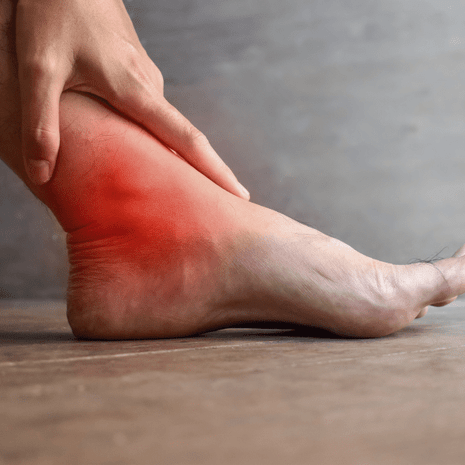Osteochondral Lesion Treatment at Foot Foundation
An osteochondral lesion is an injury to the cartilage and underlying bone, often after sprains or trauma.
At Foot Foundation, we provide accurate diagnosis, orthotics, and structured rehabilitation, with referral to orthopaedics where required.
What are Osteochondral Lesions of the Ankle?
Osteochondral lesions of the ankle (also known as osteochondritis dissecans or osteochondral defects) are injuries to the cartilage and underlying bone of the talus (ankle bone). They often occur following an ankle sprain or trauma, when a piece of cartilage and subchondral bone becomes damaged, loosened, or in some cases displaced.
This condition can cause chronic ankle pain, swelling, catching, or locking, particularly during weight-bearing. If untreated, it may progress to early ankle arthritis.
Causes & Risk Factors
Trauma – most commonly ankle sprains or fractures
Repetitive microtrauma – long-term overloading in athletes
Poor ankle stability – chronic ankle instability increases risk
Biomechanical factors – abnormal joint alignment causing focal stress
Reduced blood supply to subchondral bone (rare)
Genetic predisposition – some patients may have inherent cartilage weakness
Treatment at Foot Foundation
Activity modification – reduce high-impact loading while healing occurs
Custom orthotics – redistribute forces across the ankle joint
Footwear modification – cushioned shoes, possible rocker soles
Strengthening and proprioception programs – improve stability and reduce recurrence
Shockwave therapy – to stimulate bone and cartilage healing in certain cases
Referral to orthopaedics – if the lesion is large, unstable, or not responding to conservative care (arthroscopy, microfracture, grafting, or fixation procedures)
Symptoms
Deep ankle pain, often worse with weight-bearing
Swelling and stiffness after activity
Catching, locking, or “giving way” of the ankle joint
Tenderness over the talus with palpation
Loss of confidence in the ankle during activity
Diagnosis
At Foot Foundation, diagnosis is made through:
Clinical history (trauma or recurrent ankle sprains)
Physical examination – joint palpation, range of motion, stability testing
Imaging:
X-ray – may show bone fragments or defect
MRI – gold standard for assessing cartilage integrity, lesion size, and stability
CT scan – in complex or pre-surgical planning cases
Osteochondral Lesions – FAQs
It is an injury to the cartilage and underlying bone in the ankle joint, often caused by trauma or repeated sprains. It can lead to pain, swelling, and mechanical symptoms such as catching or locking.
Most occur following ankle sprains, where cartilage and bone are damaged due to twisting forces. Some lesions develop gradually from repetitive microtrauma.
Patients usually report deep ankle pain, swelling after activity, stiffness, and sometimes catching, locking, or instability in the joint.
Diagnosis is made with a combination of clinical assessment and imaging. MRI scans are the most accurate, showing the size, depth, and stability of the lesion.
Small lesions may heal or stabilise with rest and conservative treatment. Larger or unstable lesions often require orthopaedic intervention.
Treatment depends on severity. Conservative care includes orthotics, rehabilitation, and activity modification. Severe or unstable lesions may require surgery such as arthroscopy, microfracture, or grafting.
Without treatment, lesions may worsen over time, leading to chronic ankle pain, recurrent instability, and early arthritis.
Yes. Orthotics redistribute joint loading and reduce focal pressure on the injured cartilage and bone, helping to reduce pain and protect the joint.
If you experience persistent ankle pain, swelling, or locking after a sprain, you should seek specialist assessment. Early diagnosis prevents long-term joint damage.
Why Choose Foot Foundation?
Foot Foundation provides specialist-level care for osteochondral ankle lesions, offering advanced diagnosis, orthotic prescription, and rehabilitation programs. We work closely with orthopaedic surgeons when surgical management is required, ensuring a complete continuum of care.
With clinics in Rosedale, Takapuna, Remuera, Botany, Hamilton, and Tauranga, we deliver expert ankle care across New Zealand.




